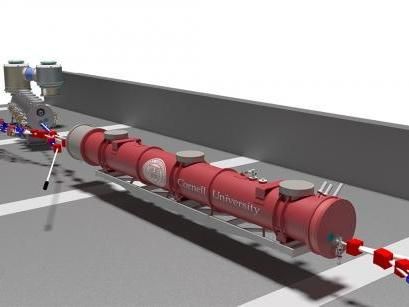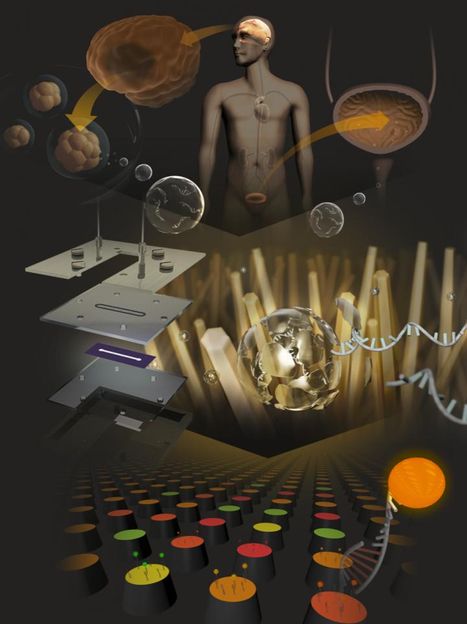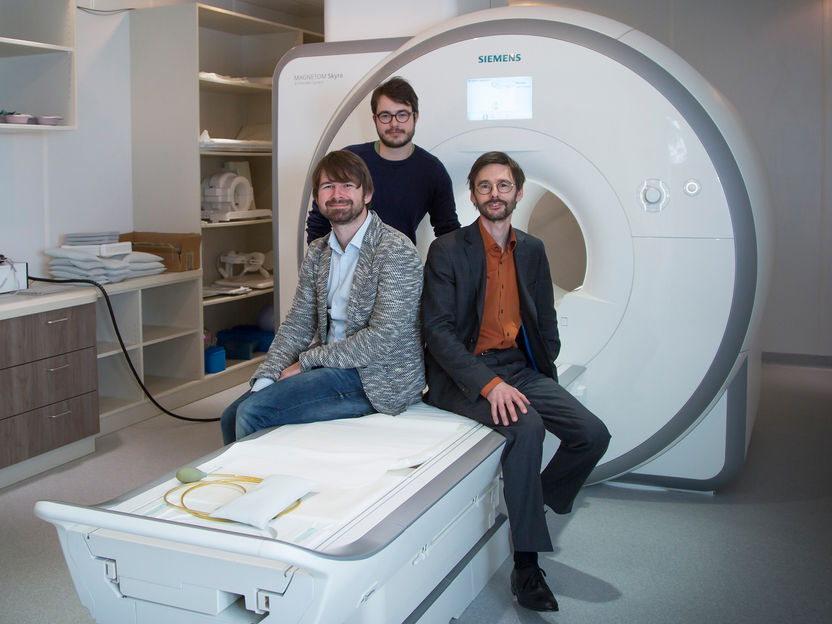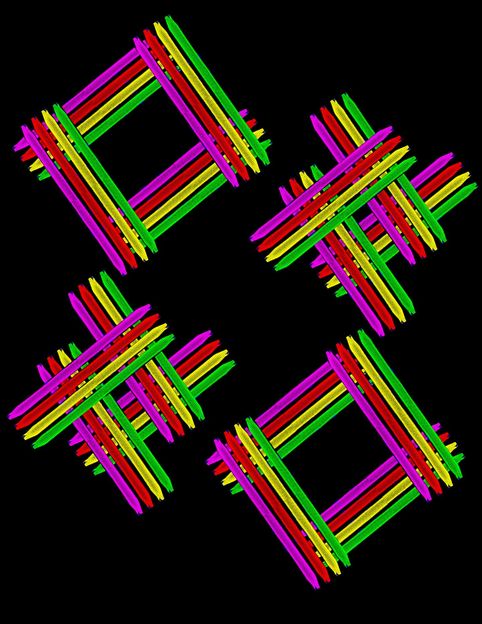Periodic modulation tweaks innovative particle accelerators
New method can enhance beam quality of plasma cells
Scientists in Hamburg have come up with an ingenious way of improving so-called plasma accelerators, which are considered promising candidates to become the particle accelerators of the future. The quality of the electron beam produced by these innovative particle accelerators can be substantially improved by adding an oscillating component, as researchers from DESY’s Accelerators and particle physics divisions, together with a group headed by Andreas R. Maier from the University of Hamburg.
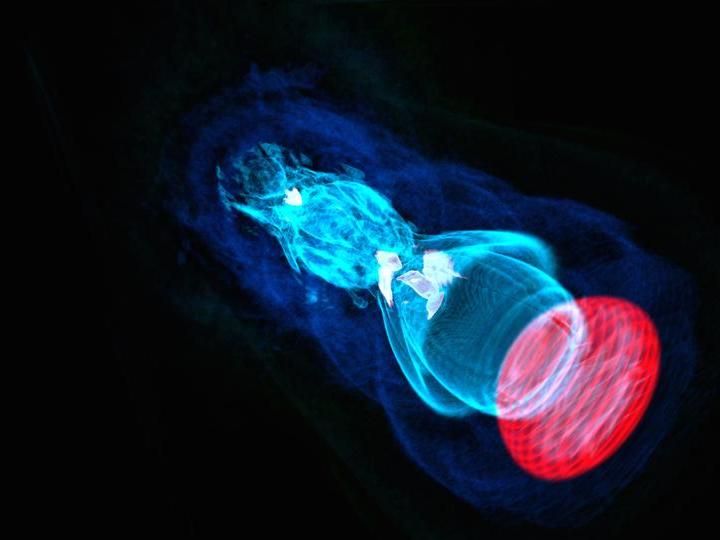
Simulation of the plasma wave following the laser pulse (red). The electron bunch is visible as a bright patch near the valley of the wave.
Sören Jalas, Universität Hamburg
Simulation of the plasma wave following the laser pulse (red). The electron bunch is visible as a bright patch near the valley of the wave. Credit: Sören Jalas, Universität Hamburg “Plasma accelerators can achieve up to a thousand times higher accelerations than the most cutting-edge machines in use today,” says Reinhard Brinkmann, the director of DESY’s Accelerators division, on whose proposal the study was based. “This makes it possible to build more compact and more powerful devices for a wide range of applications, from fundamental research through to medicine. However, the technology is still in its very early experimental stages, and we will have to solve a number of problems before it can be used in applications.”
In a plasma accelerator, a wave is produced inside a thin capillary containing an electrically charged gas, known as a plasma. This gas could be hydrogen, for example, subjected to extremely intense and short laser pulses. “These laser pulses plough their way through the gas as thin disks, wrenching the electrons away from the hydrogen molecules and sweeping them aside like a snow plough,” explains Andreas Maier, who works at the Center for Free-Electron Laser Science (CFEL), which is jointly run by DESY, the University of Hamburg und the Max Planck Society. “Electrons in the wake of the pulse are accelerated by the positively charged plasma wave in front of them – much like a wakesurfer riding the wave behind a boat.”
The acceleration experienced is not the same for all the electrons, however, but depends on their precise position on the wave. Particles that are further forward are accelerated less than those riding further behind. The result is an unfavourably wide spread in the particles’ energies. “This leads to a similar problem to that encountered when focusing light made up of many different colours,” explains Maier. “A lens is only ever ideal for a single colour. Similarly, the electrons can only be focussed perfectly for a very specific energy. This means that reducing the so-called energy spread is one of the most important problems facing plasma accelerators.”
The solution proposed by Reinhard Brinkmann was to allow the electrons to swing to and fro across the trough of the wave. As a result, first one side of the electron bunch is accelerated more, then the other. On average, the two effects balance each other so that all the electrons experience the same acceleration – the energy spread shrinks dramatically. Also, during the process, the signs of the focusing forces alternate. This method of “alternating gradient focusing” is well-established in conventional accelerators, allowing them to produce stable particle paths. Apart from leading to a small energy spread, the method also ensures that the beam is very narrowly confined (i.e. it has a low emittance).
Achieving this is not that simple, however, since the entire plasma wave is just 0.1 millimetres or so in length, and the electrons cannot simply be moved back and forth in the short time necessary. “Manipulating the electrons is very difficult,” says Maier. So the physicists came up with an alternative: instead of moving the electrons around, the plasma wave itself can be pushed to and fro, which is much easier to control. To do this, the gas-filled capillary must consist of alternating high- and low-density zones, which is achieved by positioning several nozzles along the capillaries, themselves a few millimetres long, and injecting gas through the nozzles. Each jet produces a zone of high-density gas inside the capillaries. Because of the fluctuating density, the wavelength of the plasma wave also fluctuates, so that it shifts with respect to the electrons. As a result, the particles sometimes ride further forward, and sometimes further back on the wave.
“This means that we can modify macroscopic parameters, such as the pressure in the hydrogen inlet, to influence the electron beam on a micrometre scale,” says Maier. “We are hoping that the principle we have come up with will give us direct control over the accelerating field. This would be a crucial step towards the development of plasma accelerators.” The scientists have carried out detailed simulations of their method on the JURECA supercomputer at the Jülich Research Centre, among others. However, a practical test still needs to be conducted. In a first step, the physicists want to try out the underlying concept on the experimental laser plasma accelerator LUX and influence the electrons directly by specifically controlling the plasma density in the capillaries. LUX is jointly operated by DESY and the University of Hamburg, as part of their LAOLA collaboration.
Original publication
R. Brinkmann, N. Delbos, I. Dornmair, M. Kirchen, R. Assmann, C. Behrens, K. Floettmann, J. Grebenyuk, M. Gross, S. Jalas, T. Mehrling, A. Martinez de la Ossa, J. Osterhoff, B. Schmidt, V. Wacker, and A. R. Maier; "Chirp Mitigation of Plasma-Accelerated Beams by a Modulated Plasma Density"; Phys. Rev. Lett.; 2017
